
Lit Hub Staff Picks: Our Favorite Stories This Month
The Best Writing at the Site in November
From essays to interviews, excerpts and reading lists, we publish around 150 features a month. And though we’re proud of each week’s offerings, we do have our personal favorites. Below are some of our favorite pieces of writing from the month at Lit Hub.
![]()
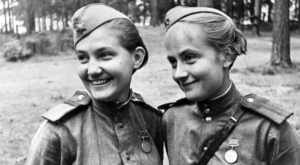
“I Was Almost Svetlana Alexievich’s Translator” by Laura Esther Wolfson
Imagine the person you could’ve been: the respected translator of a woman who was destined, perhaps, to win the Nobel Prize in Literature for her writings on the Soviet Union. Now insert life into the equation. You’ve been confined to hospitals repeatedly for a degenerative lung condition, other projects were more pressing at the time, someone took credit for the work you did. The speculative remains fettered to realities of sickness, boredom, anxiety and doubt. Laura Esther Wolfson’s heartbreaking essay on things that almost were is at times scathing, though not predictably bitter, and offers compelling commentary on the life and work of the Belarusian journalist and oral historian Svetlana Alexievich.
–Aaron Robertson, Lit Hub assistant editor
 “Having No Time Is the Best Time to Get Writing Done” by Jessie Greengrass
“Having No Time Is the Best Time to Get Writing Done” by Jessie Greengrass
I am not someone who does well with vast swaths of unscheduled time. I find that the more I have, the more I waste (but only if you consider reading detailed recaps of every Babysitter’s Club novel a waste of time!). Jessie Greengrass’ piece about the value of having to fit writing into the slivers of free time in a busy day resonated so strongly with me. “This thought then, now, still: that it is a lack in me which made those years not transformative, but lost,” she writes, acknowledging the fear that coexists with the peace she feels now. The writing in the piece is so sharp (painfully so, at times) that it’s absolutely worth a read even if you’re not desperately seeking validation for your misspent youth.
–Jessie Gaynor, Lit Hub social media editor
 “Before the Neapolitan Quartet, There was Sula” by Gwen Aviles
“Before the Neapolitan Quartet, There was Sula” by Gwen Aviles
This essay puts into words something that I thought in 2013 when everyone was hailing Elena Ferrante’s novels as the first time female friendships had been celebrated in literature: um, nope. It’s unfortunately obvious why Sula hasn’t been given the same treatment as My Brilliant Friend, but I do hold out hope for the future (are the rights available?) and as a fan of both Ferrante and Morrison (though I’d venture that I love Beloved more and My Brilliant Friend less than any average reader), I enjoyed this comparison—and the reminder that it’s about time we all revisited Sula.
–Emily Temple, Lit Hub senior editor
 “Stop Dismissing Inclusive Children’s Books as ‘Too Political’” by Erinn Salge
“Stop Dismissing Inclusive Children’s Books as ‘Too Political’” by Erinn Salge
As a kid, learning how to read and how to be a person, I had maybe two children’s books with characters that looked like me. My mom sought them out. We did not read them in school. You couldn’t find them at the local library. My friends were unfamiliar with these specific stories. But now I feel like we’re living in a renaissance of children’s literature. Small presses like Archipelago and Feminist Press have begun publishing children’s books, telling international stories. Not to mention James Baldwin’s long-lost Little Man, Little Man was published this year. I, personally, spend a lot of time at bookstores in the children’s books sections, and I wholeheartedly agree with Erinn Salge’s essay about the importance of representation on the page. She says: “For decades, many of these stories have been relegated to the ‘special interest’ shelf, signaling to children that these narratives only need to be read by certain people.” Do yourself a favor and read this piece, then maybe spend some time milling about in a children’s bookstore.
–Katie Yee, Book Marks assistant editor
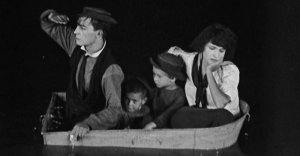 “What Silent Film and Found Photographs Can Show Us About Writing” by Maria Romasco Moore
“What Silent Film and Found Photographs Can Show Us About Writing” by Maria Romasco Moore
I’m always in awe (and in search) of writing that’s lyrical and dreamlike but also piques my curiosity, tells me about something I know very little about, or makes me think. This piece does all of the above, weaving deftly between recollections of Maria Romasco Moore’s own life, reflections on the history of silent film (a.k.a. the “Kingdom of Shadows,” Maxim Gorky’s description of the world of silent film), and discussions of craft. All of this leads to a gorgeous final scene that describes the end of the Buster Keaton film “The Boat”, leaving the reader (or me, anyway) on a pale shore in the Kingdom of Shadows. Romasco Moore says that the final scene of “The Boat” gives her chills—that’s exactly what this piece does for me.
–Miriam Kumaradoss, Lit Hub editorial fellow

“Windows to the World: At WS Merwin’s Old French Farmhouse” by Michael Wiegers
This profile—not exactly of Merwin himself, but of the house and home he made for himself in Loubressac, in the south of France—was a long time in the writing, and as such feels deeply lived in. It’s a marvelous look at the literary life and times of one of America’s great poets through lens of where he made his life, and how it shaped his view of the wider world.
–Jonny Diamond, Editor in Chief
 “It’s Taken 40 Years For Me To Write About the Day My Brother Died” by Richard Beard
“It’s Taken 40 Years For Me To Write About the Day My Brother Died” by Richard Beard
This excerpt from Beard’s new book, The Day That Went Missing, is a heartbreaking account of a writer beginning to come to terms with the death of his brother on a family holiday. But it’s also the story of a writer learning to write about his own grief. “From my experience of teaching creative writing I’m wary of shortcuts to Characterization. In particular, I distrust classroom exercises that involve a questionnaire… This is how a fiction writer is taught to fully realize a nonexistent character, as part of the creative process. This step is essential, because if a character fails to come alive, no one will care when he dies.” If you need a good cry, I highly recommend.
–Emily Firetog, Lit Hub managing editor
 “So, Do Women Have Better Sex Under Socialism?” by Kristen R. Ghodsee
“So, Do Women Have Better Sex Under Socialism?” by Kristen R. Ghodsee
“Her husband earned enough to support her, and he preferred that she not be employed.” Shudder. From there, Kristen Ghodsee lays out two different paths—that of her friend Lisa, whose financial dependence on her husband leaves her in a miserable, transactional relationship with him—and her own struggles as a young mother on the tenure track. Both cases are illustrative of the ways that under capitalism, women’s work is undervalued and their access to resources is too-often determined by the sexual gratification they can offer men. Ghodsee also looks at the ways in which legal systems have reflected and reinforced patriarchal structures, framing her argument with examples from history.
–Corinne Segal, Lit Hub senior editor
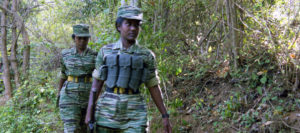 “On the Myth of Stockholm Syndrome and Women Guerrilla Fighters” by Nimmi Gowrinathan
“On the Myth of Stockholm Syndrome and Women Guerrilla Fighters” by Nimmi Gowrinathan
Radical politics ought to require some kind of radical aesthetics, especially if the goal of writing is to question narratives which are broken. This is precisely what Nimmi Gowrinathan is up to her essay, beginning with a devastating glimpse at the fraudulence of the Stockholm Syndrome, showing how it’s often misapplied to women whose rage is not recognized by power politics. Gowrinathan has spent her life studying the female fighter and she brings that wisdom to bear beautifully here, recalibrating storytelling to say perhaps it is in the middle of a tale wherein possibility lies, not a predetermined ending.
–John Freeman, Lit Hub executive editor
 “Whose Security Matters” by Sarah St. Vincent
“Whose Security Matters” by Sarah St. Vincent
In a genre full of watchers, crime writers always have surveillance on the mind. Beyond the crime novel, we live in a world increasingly defined by CCTV cameras on every corner, and increasing government surveillance dwarfed by constant monitoring by advertising companies, yet those who are surveilled are not equivalent to those most likely to commit violence. In this essay on surveillance, human rights, and fiction, surveillance expert and crime writer Sarah St. Vincent asks whose security matters, and points out that domestic abusers, a population linked not only to further violence against women but also to mass shootings and other instances of indiscriminate violence, are much less likely to be monitored than those “the government thinks of as a terrorist”, despite posing a much greater risk to society.
–Molly Odintz, CrimeReads associate editor
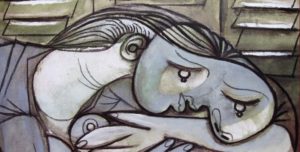
“Adventures in Insomnia” by Marina Benjamin
Mercifully, I’ve never really struggled with insomnia; not for any extended period at least. I rarely sleep enough, and that sleep is often crowded with odd, almost nightmares, but I do sleep. My brother, on the other hand, has been plagued by insomnia for the better part of twenty years. He’ll lose whole weeks to it, and still have to turn up to work and keep social engagements and live normally despite being zombified by sleeplessness. In this fascinating, and frequently very funny, excerpt from Insomnia, Marina Benjamin considers the nature of the malady, the limitations of traditionally prescribed counter-measures, Nabokov’s dream diary, the shared dream landscapes of the oppressed, and more. “I could murder some sleep. Even at the price of reckoning with my soul. Especially at that price, in fact, since everybody carries a part of the night within them, a small piece of impenetrable, unknowing darkness…”
–Dan Sheehan, Book Marks senior editor
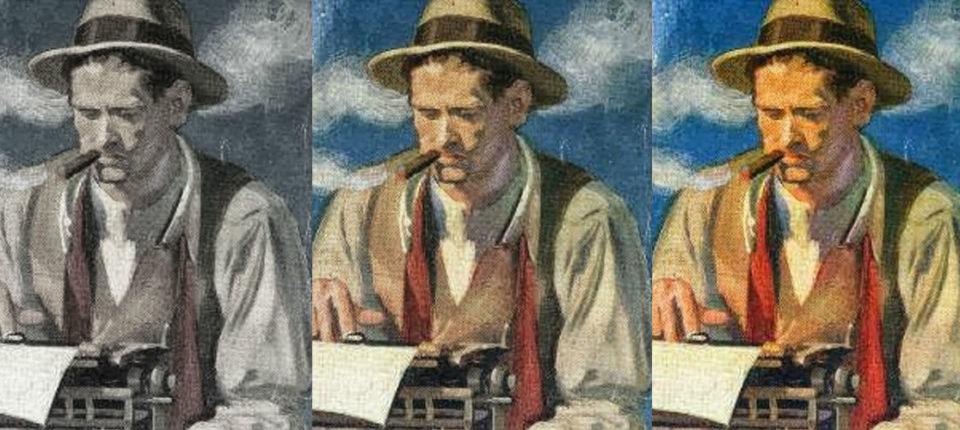 “A Brief History of Reporters in Crime Fiction,” by J. Kingston Pierce
“A Brief History of Reporters in Crime Fiction,” by J. Kingston Pierce
The PI and the investigative reporter are spiritual cousins, so it shouldn’t come as any surprise that the annals of mystery fiction are filled with “scribbler sleuths,” as journalist and crime fiction connoisseur J. Kingston Pierce describes them. Here, Pierce takes us through the history of reporters as protagonists in crime fiction, from the 1930s newsroom heyday down to the modern era of crumbling media empires and lone reporter holdouts fighting the good fight, with a dash of the immortal Pete Hamill in between. There isn’t a book mentioned in this piece that you won’t want to read at some point. Plus, for those conversant in newsroom lingo, there’s a nice little hat tip / hidden code in the piece.
–Dwyer Murphy, CrimeReads senior editor



















